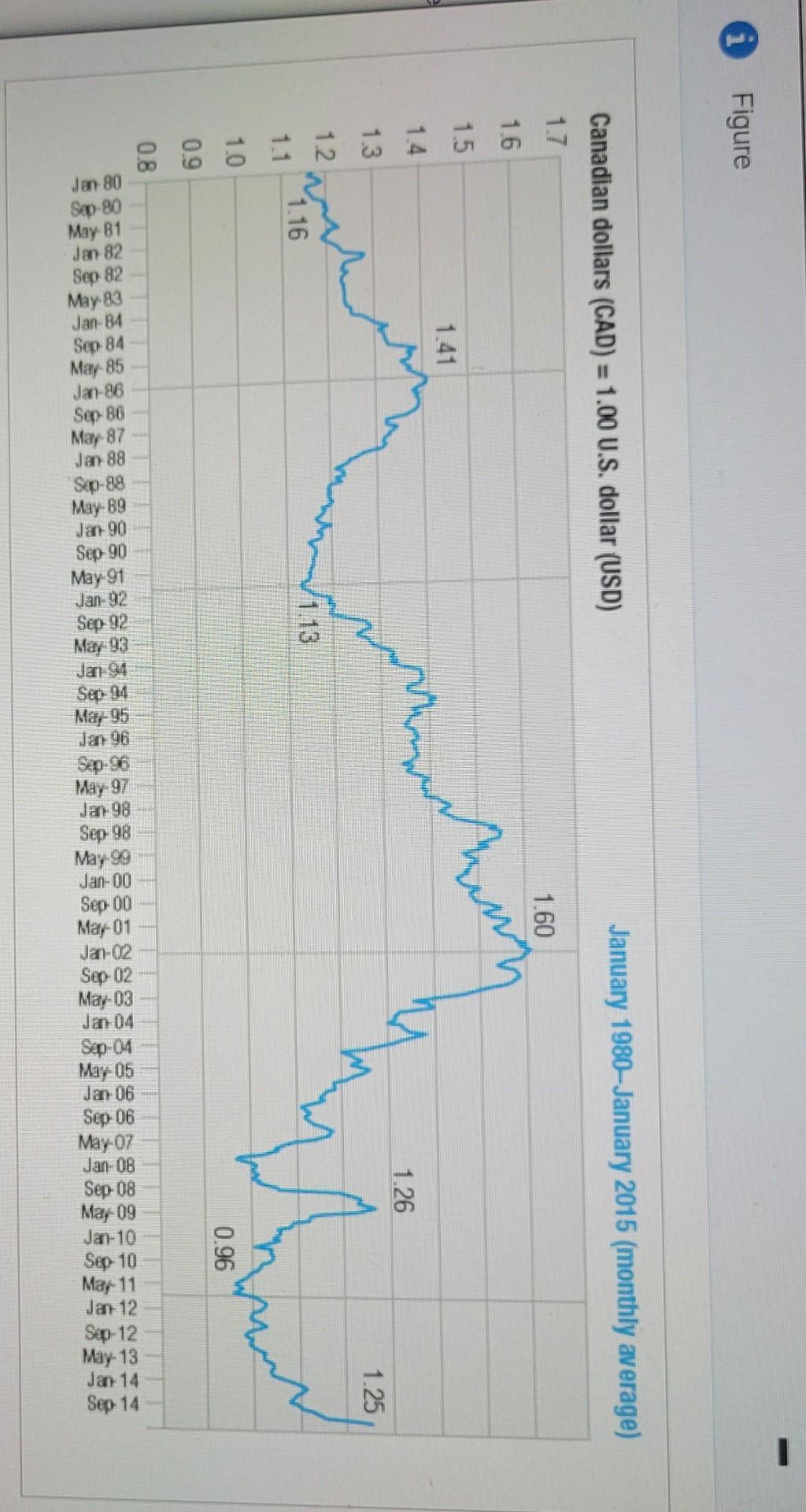Analyzing The Canadian Dollar's Performance Against Global Currencies

Table of Contents
Key Factors Influencing the Canadian Dollar Exchange Rate
Several interconnected factors significantly influence the Canadian dollar exchange rate. These factors need careful consideration for anyone seeking to understand and potentially profit from CAD movements.
Commodity Prices (Oil & Natural Gas)
Canada is a major exporter of oil and natural gas. Therefore, the CAD exchange rate is strongly correlated with the prices of these commodities. When global demand for oil and natural gas increases, or supply is disrupted, prices rise, boosting the CAD. Conversely, a decline in commodity prices weakens the currency.
- Impact of OPEC decisions: Decisions by the Organization of the Petroleum Exporting Countries (OPEC) regarding oil production quotas directly impact global supply and, consequently, the CAD.
- Global demand fluctuations: Changes in global economic growth affect energy demand, influencing oil and natural gas prices and the CAD. A global recession, for example, typically leads to lower energy prices and a weaker CAD.
- Supply chain disruptions: Geopolitical events or natural disasters disrupting oil and gas production can cause price spikes and strengthen the CAD temporarily. The 2022 war in Ukraine serves as a prime example of such an event. For instance, a 10% increase in oil prices historically correlates with roughly a 2-3% appreciation in the CAD against the USD.
Interest Rate Differentials
The Bank of Canada's monetary policy, specifically its interest rate decisions, plays a crucial role in determining the Canadian dollar exchange rate. Higher interest rates in Canada compared to other major economies attract foreign investment, increasing demand for the CAD and strengthening its value.
- Comparison of Canadian interest rates with US, Eurozone, and other key economies: A higher interest rate differential between Canada and its trading partners tends to strengthen the CAD.
- Impact of monetary policy announcements: Announcements regarding interest rate changes by the Bank of Canada often trigger immediate and significant fluctuations in the CAD exchange rate. Unexpected increases generally strengthen the currency, while cuts weaken it.
Geopolitical Events and Global Economic Uncertainty
Global events and economic uncertainty significantly impact investor sentiment and, consequently, currency markets. Periods of heightened risk aversion often lead to capital flowing into safe-haven currencies like the US dollar, weakening the CAD.
- Examples of specific geopolitical events and their impact on CAD: Trade wars, political instability in major economies, and global pandemics can all negatively impact the CAD. The COVID-19 pandemic, for example, initially led to a sharp depreciation of the CAD.
- The role of risk aversion in currency markets: During times of uncertainty, investors tend to move towards safer assets, reducing demand for riskier currencies like the CAD.
US Dollar Strength
Given the close economic ties between Canada and the United States, the strength of the US dollar (USD) heavily influences the CAD exchange rate. A stronger USD typically leads to a weaker CAD, and vice versa.
- Analyze USD strength and its impact on CAD/USD exchange rate: The USD's value is driven by various factors, including US economic data, Federal Reserve policy, and global geopolitical events. A strong USD puts downward pressure on the CAD/USD exchange rate.
- Implications for Canadian exporters and importers: A weaker CAD benefits Canadian exporters as their goods become more competitive internationally, while a stronger CAD benefits importers.
Analyzing the Canadian Dollar's Performance Against Major Currencies
Understanding the CAD's performance against major currencies requires analyzing specific currency pairs.
CAD/USD Exchange Rate
The CAD/USD pair is the most heavily traded currency pair involving the Canadian dollar. Historical trends show a significant correlation between commodity prices (especially oil) and the CAD/USD rate.
- Charts and graphs illustrating CAD/USD exchange rate movements over time: Analyzing historical charts helps identify trends and potential support/resistance levels.
- Discuss key support and resistance levels: Technical analysis can help identify key price levels where the exchange rate might experience consolidation or reversals.
CAD/EUR Exchange Rate
The CAD/EUR exchange rate is influenced by the relative economic performance of Canada and the Eurozone, as well as monetary policy decisions by the European Central Bank (ECB).
- Similar to CAD/USD, include charts, key levels, and factors influencing the pair: Analyzing historical data and identifying key support and resistance levels are crucial for understanding CAD/EUR dynamics.
CAD/GBP Exchange Rate
Brexit and the UK's economic performance have significantly influenced the CAD/GBP exchange rate. The uncertainty surrounding the UK's future economic trajectory continues to affect this currency pair.
- Similar to CAD/USD and CAD/EUR, with specific focus on Brexit's influence: Understanding the ongoing impact of Brexit on the UK economy is vital for interpreting CAD/GBP fluctuations.
CAD Against Emerging Market Currencies
The CAD's performance against emerging market currencies can be quite volatile, often reflecting factors specific to those economies as well as global risk sentiment.
- Analyzing specific pairs (e.g., CAD/MXN, CAD/BRL) can provide insights into the CAD's broader performance in a global context.
Forecasting the Canadian Dollar's Future Performance
Accurately predicting exchange rate movements is challenging due to the complex interplay of factors involved. However, monitoring key indicators can provide valuable insights.
- Key factors to watch: Interest rate differentials, commodity prices (especially oil and natural gas), geopolitical events, and US dollar strength remain crucial factors to monitor for predicting future CAD performance.
- Offer a cautious outlook, avoiding definitive predictions: Instead of making specific predictions, focusing on the potential impact of these key factors provides a more responsible and useful analysis.
Conclusion
The Canadian dollar exchange rate is influenced by a multitude of factors, including commodity prices, interest rate differentials, geopolitical events, and the strength of the US dollar. Understanding these factors is essential for anyone involved in international trade, travel, or global investment. Monitoring these factors and staying informed about economic developments will allow you to better understand and potentially profit from future CAD exchange rate fluctuations. Continue your research into the Canadian dollar exchange rate by consulting resources like the Bank of Canada's website, reputable financial news outlets, and currency trading platforms. Staying informed about the factors that influence the Canadian dollar's value will allow for better financial decision-making.

Featured Posts
-
 Three Years Of Data Breaches Cost T Mobile A 16 Million Fine
Apr 24, 2025
Three Years Of Data Breaches Cost T Mobile A 16 Million Fine
Apr 24, 2025 -
 Steffy And Liams Heart To Heart Finns Warning The Bold And The Beautiful Spoilers For Thursday February 20th
Apr 24, 2025
Steffy And Liams Heart To Heart Finns Warning The Bold And The Beautiful Spoilers For Thursday February 20th
Apr 24, 2025 -
 Trump Administration Immigration Policies Face Legal Challenges
Apr 24, 2025
Trump Administration Immigration Policies Face Legal Challenges
Apr 24, 2025 -
 Investor Concerns About Stock Market Valuations Bof As Response
Apr 24, 2025
Investor Concerns About Stock Market Valuations Bof As Response
Apr 24, 2025 -
 24 Year Old Ella Bleu Travolta A Fashion Cover Stars Dramatic Makeover
Apr 24, 2025
24 Year Old Ella Bleu Travolta A Fashion Cover Stars Dramatic Makeover
Apr 24, 2025
